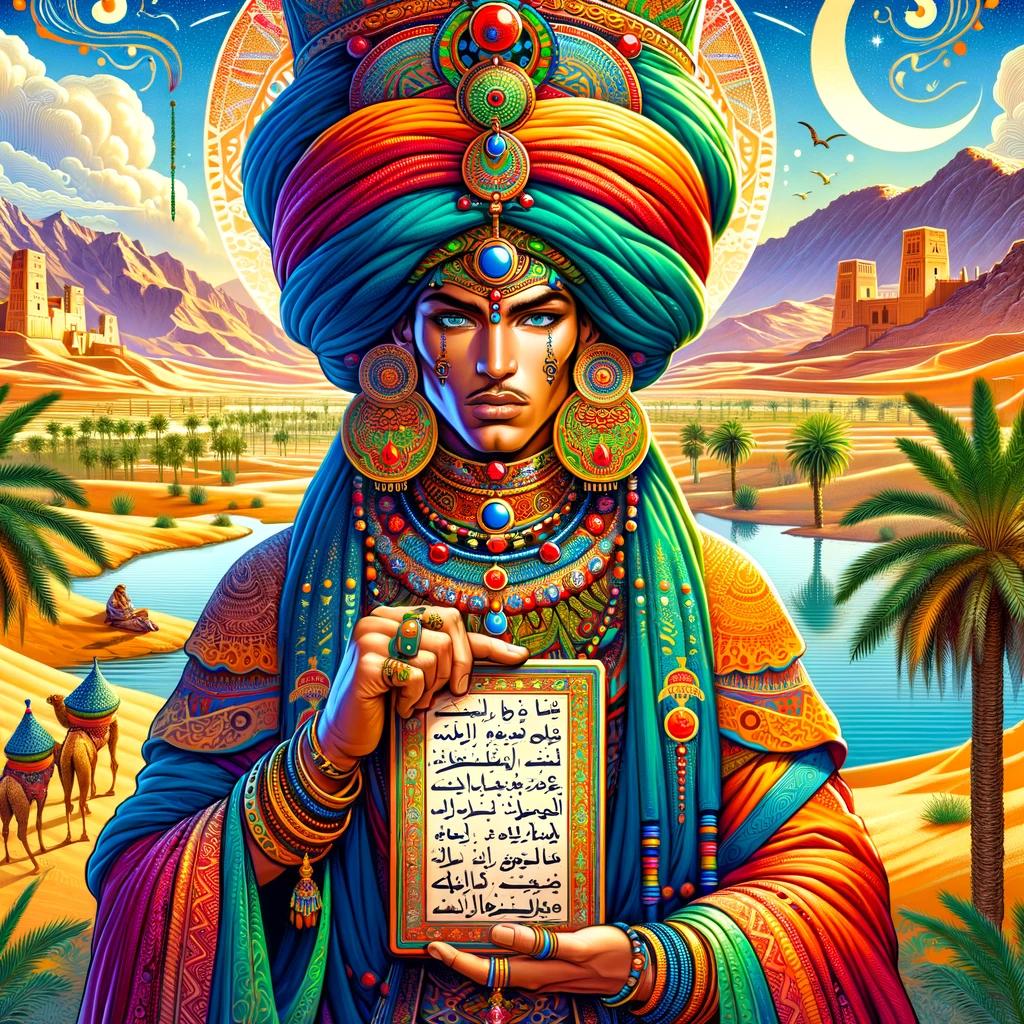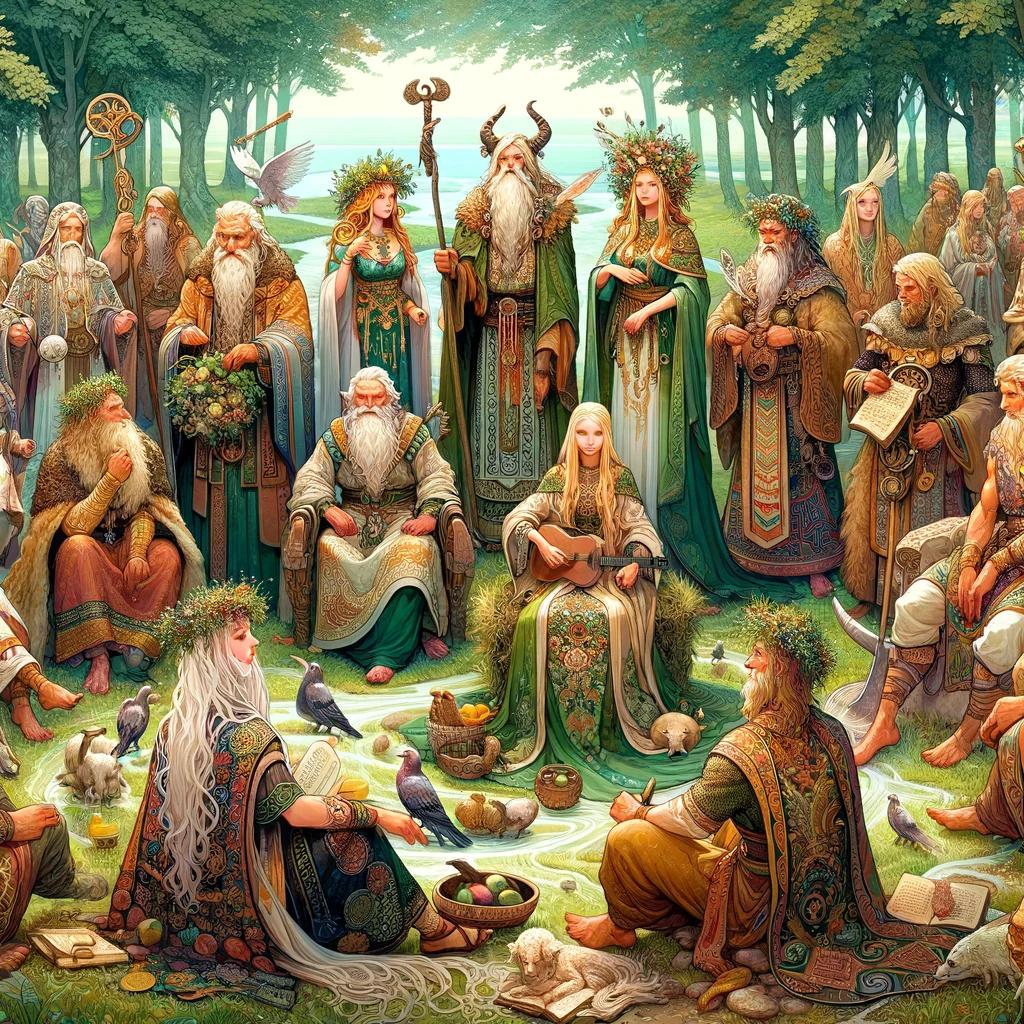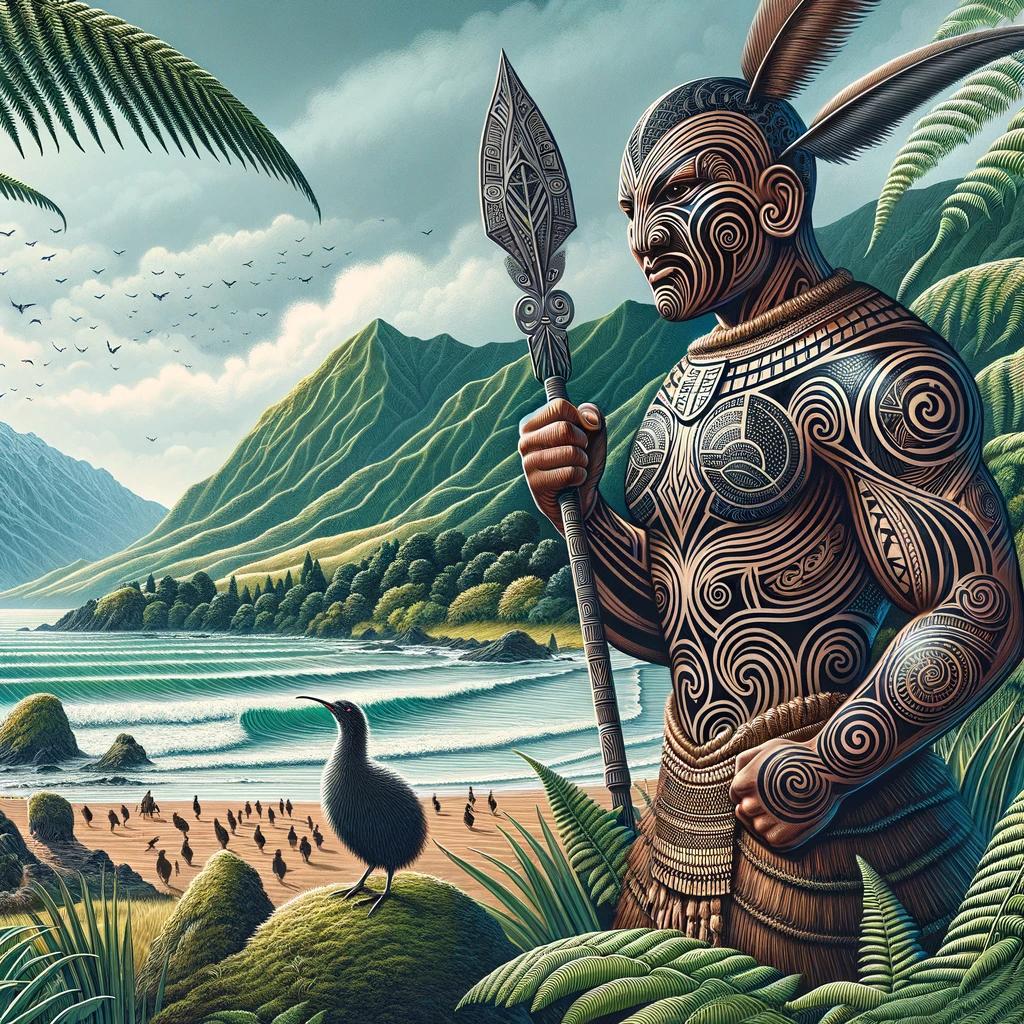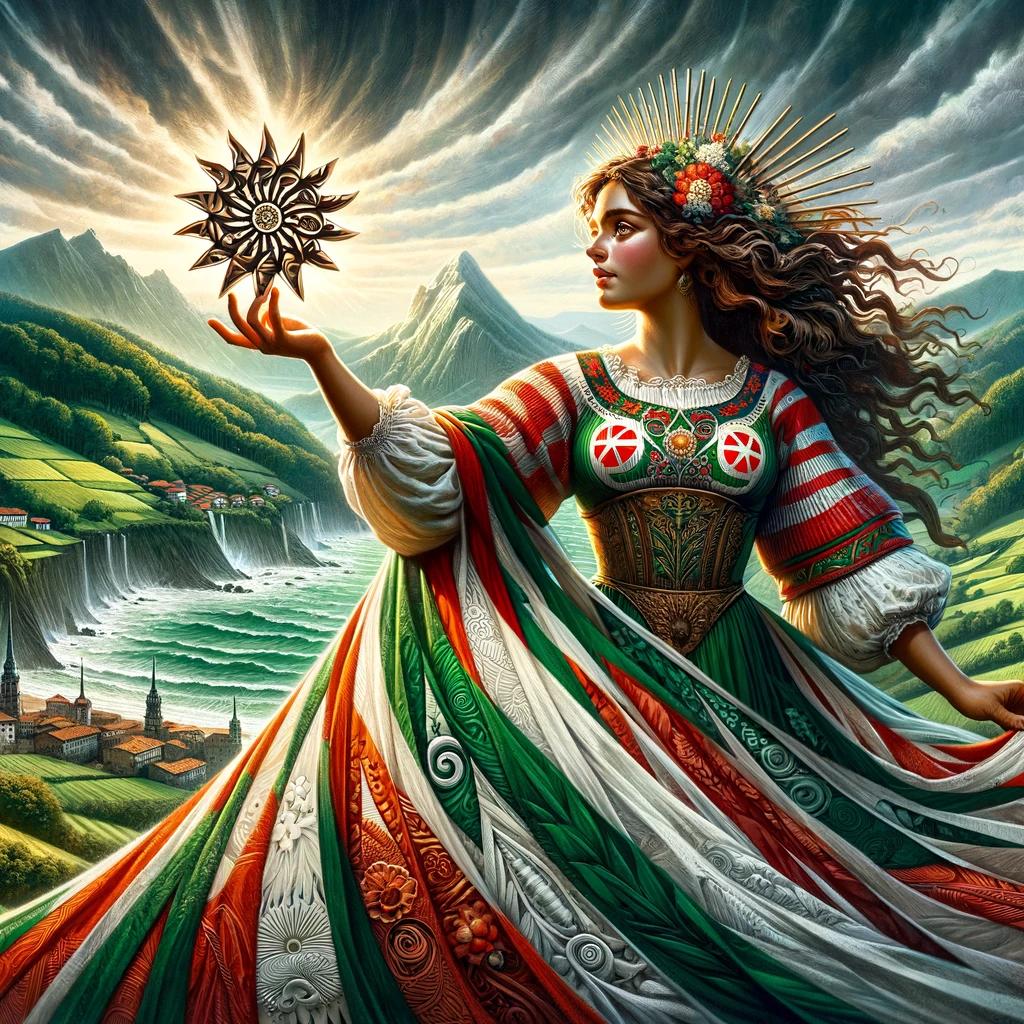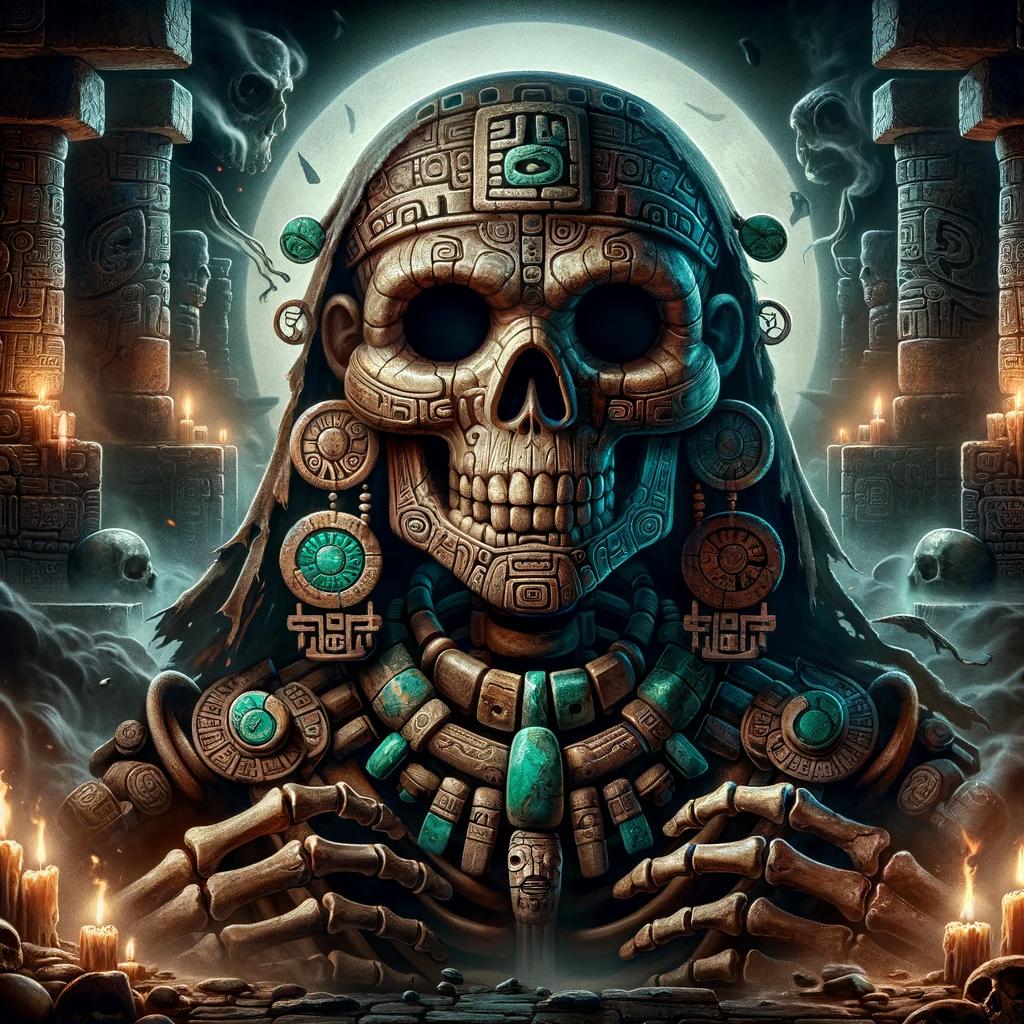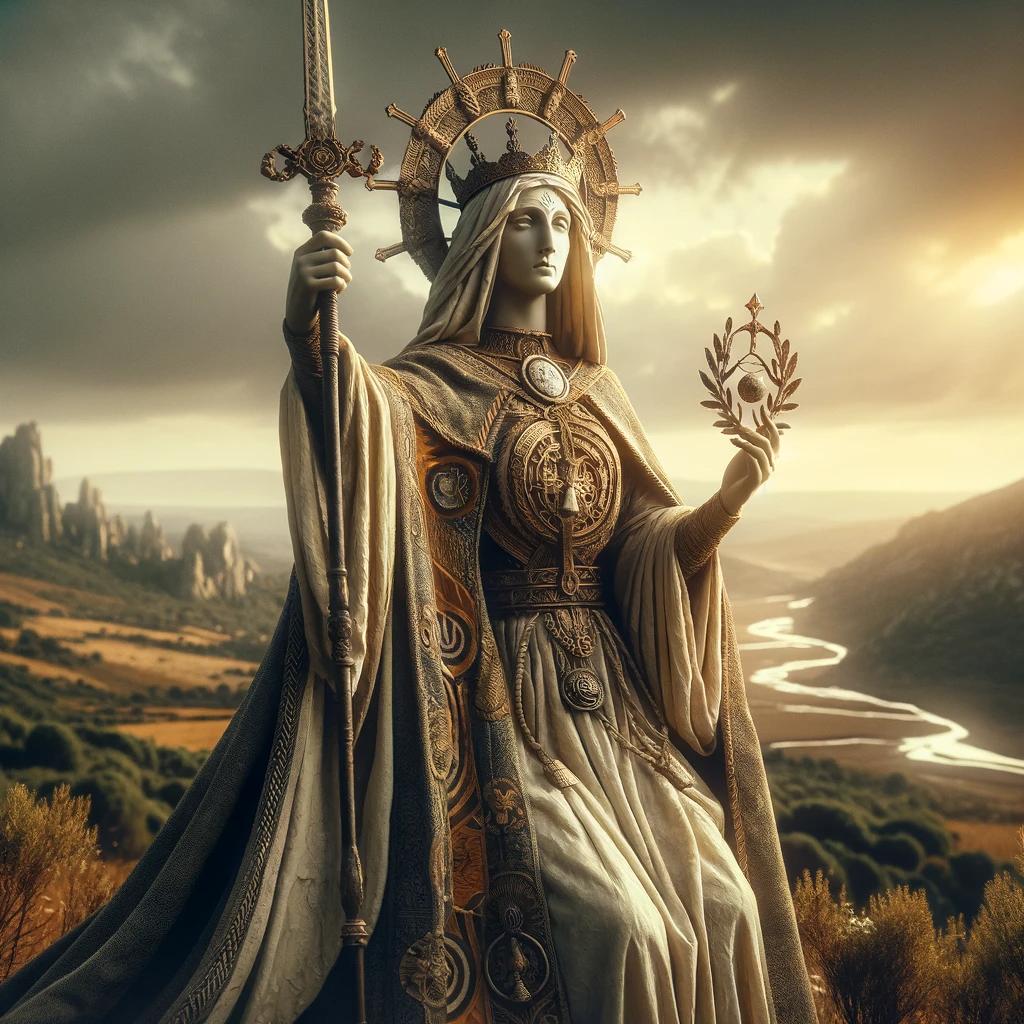Caribbean Mythology: Exploring the Gods and Goddesses in the Caribbean
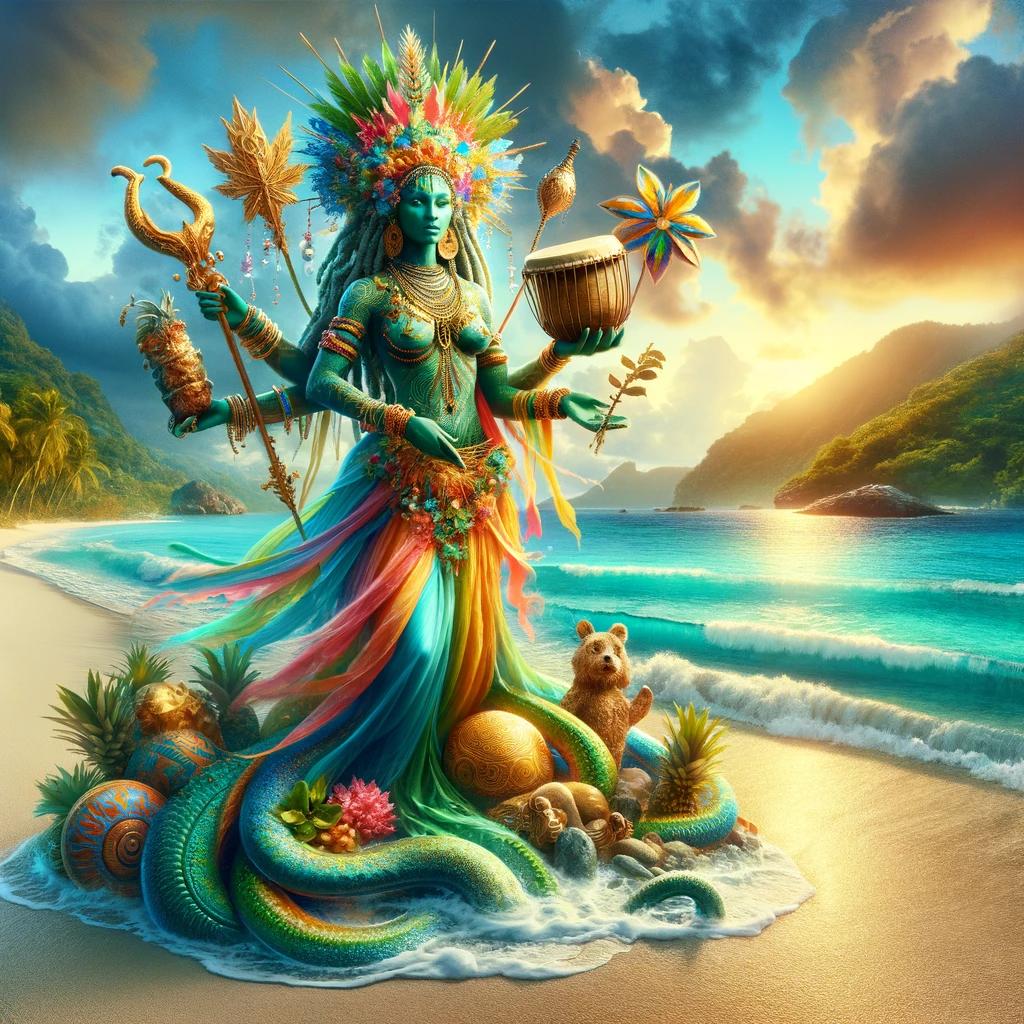
The mythology of the Caribbean, specifically in Haiti, Cuba, the Dominican Republic, Jamaica, and Puerto Rico, is a fascinating blend of African traditions and dominant Catholic rituals. The practice of Vodou holds significant influence in Haitian mythology, while Cuban mythology showcases a fusion of African and Catholic beliefs.
In the Dominican Republic, various legends and deities exist in Caribbean folklore, and Jamaican mythology presents an Afro-Caribbean blend. Puerto Rican mythology revolves around the legends of the Taínos. This article explores the gods and goddesses from these captivating Caribbean mythologies, as well as their presence in popular culture and the blending of belief systems throughout the region.
The Influence of African Traditions in Caribbean Mythology
The mythology of the Caribbean, particularly in countries like Haiti, Cuba, the Dominican Republic, Jamaica, and Puerto Rico, is deeply rooted in the influence of African traditions. When African slaves were brought to these lands, they brought with them their own deities and spirits, seamlessly blending their beliefs with the dominant Catholic rituals.
The African traditions played a significant role in shaping the mythology of the Caribbean. These traditions not only provided a means of spiritual expression for the enslaved Africans but also served as a way to preserve their cultural identity amidst the harsh realities of slavery.
The gods and goddesses worshipped by the Africans became intertwined with the new religious practices of the region, resulting in a unique and syncretic mythology.
One of the prominent practices that emerged from this fusion of African and Catholic beliefs is Vodou, particularly in Haiti.
Vodou, also known as Vodun, combines elements of traditional African religion with Catholicism, creating a rich and complex spiritual tradition. It incorporates the worship of a pantheon of gods and goddesses, each with their own unique characteristics and powers.
The African influence on Caribbean mythology can be seen in the diverse range of deities and spirits worshipped across the region. From the powerful warrior spirits like Ogou Feray and Ezili Dantor in Haitian Vodou to the vibrant pantheon of orishas in Cuban Santeria, African traditions have left an indelible mark on the mythology of the Caribbean.
Through the integration of African traditions into Caribbean mythology, a rich tapestry of gods, goddesses, and spirits has emerged, each playing a distinct role in the spiritual and cultural landscape of the region.
These mythological figures serve as a testament to the resilience and creativity of the African people and their enduring legacy in the Caribbean.
The Role of Vodou in Haitian Mythology
Vodou, also known as Voodoo, holds a significant role in Haitian mythology. Born out of the blending of African traditions and Catholicism, Vodou represents a unique spiritual and cultural practice in Haiti.
It encompasses a belief in a vast pantheon of gods and goddesses, called lwa or loa, who have specific attributes and powers.
Central to Haitian Vodou is the idea of spirit possession, where individuals can be temporarily overtaken by a lwa.
This possession is seen as a form of divine communication and connection with the spiritual realm, allowing the lwa to interact with the human world and provide guidance or assistance. The rituals and ceremonies associated with Vodou involve drumming, dancing, singing, and offerings to honor and appease the lwa.
Haitian Vodou is deeply rooted in the concept of balance and reciprocity. It emphasizes the interconnectedness of the human and spiritual realms, and the importance of maintaining harmony in all aspects of life.
The lwa are believed to have the power to bring blessings, protection, or even misfortune depending on how they are approached and honored.
- Baron Samedi: Known as the Spirit of Death, Baron Samedi is often depicted as a skeletal figure wearing a top hat and smoking a cigar.
He is associated with the cemetery and serves as the intermediary between the living and the dead.
- Papa Legba: Papa Legba is considered the Gatekeeper and Messenger. He is believed to be the first and most important lwa, responsible for opening the gates between the human and spiritual realms.
- Ezili Dantor: Ezili Dantor is widely regarded as the Mother of the Revolution.
She is a fierce warrior goddess associated with motherhood, strength, and liberation.
- Ogou Feray: Ogou Feray embodies the qualities of a warrior spirit. He is associated with fire, iron, and military prowess, and represents the strength and protection of the Haitian people.
Haitian Vodou continues to be an integral part of Haitian culture, providing spiritual guidance, healing, and a sense of community.
Despite misconceptions and sensationalized portrayals in popular media, Vodou holds deep significance and is a source of pride and resilience for the Haitian people.
Popular Gods and Goddesses in Haitian Vodou
Popular Gods and Goddesses play significant roles in Haitian Vodou, a prominent practice in Haiti that combines African and Catholic influences.
These deities hold unique characteristics and are revered for their specific powers and attributes.
Baron Samedi: The Spirit of Death
Baron Samedi, a central figure in Haitian Vodou, is often depicted as a skeletal figure wearing a top hat and sunglasses. He governs the realm of death and is known for his raucous personality, representing the cycle of life and its inevitable end.
Papa Legba: The Gatekeeper and Messenger
Papa Legba serves as the intermediary between humans and the Vodou spirits. He is depicted as an old man with a top hat, a cane, and a pipe. Papa Legba grants or denies access to the spirits and is the bearer of messages and communication.
Ezili Dantor: The Mother of the Revolution
Ezili Dantor is a fierce warrior goddess associated with motherhood, protectiveness, and revolution. She is often depicted as a black woman holding a child in one arm and a weapon in the other.
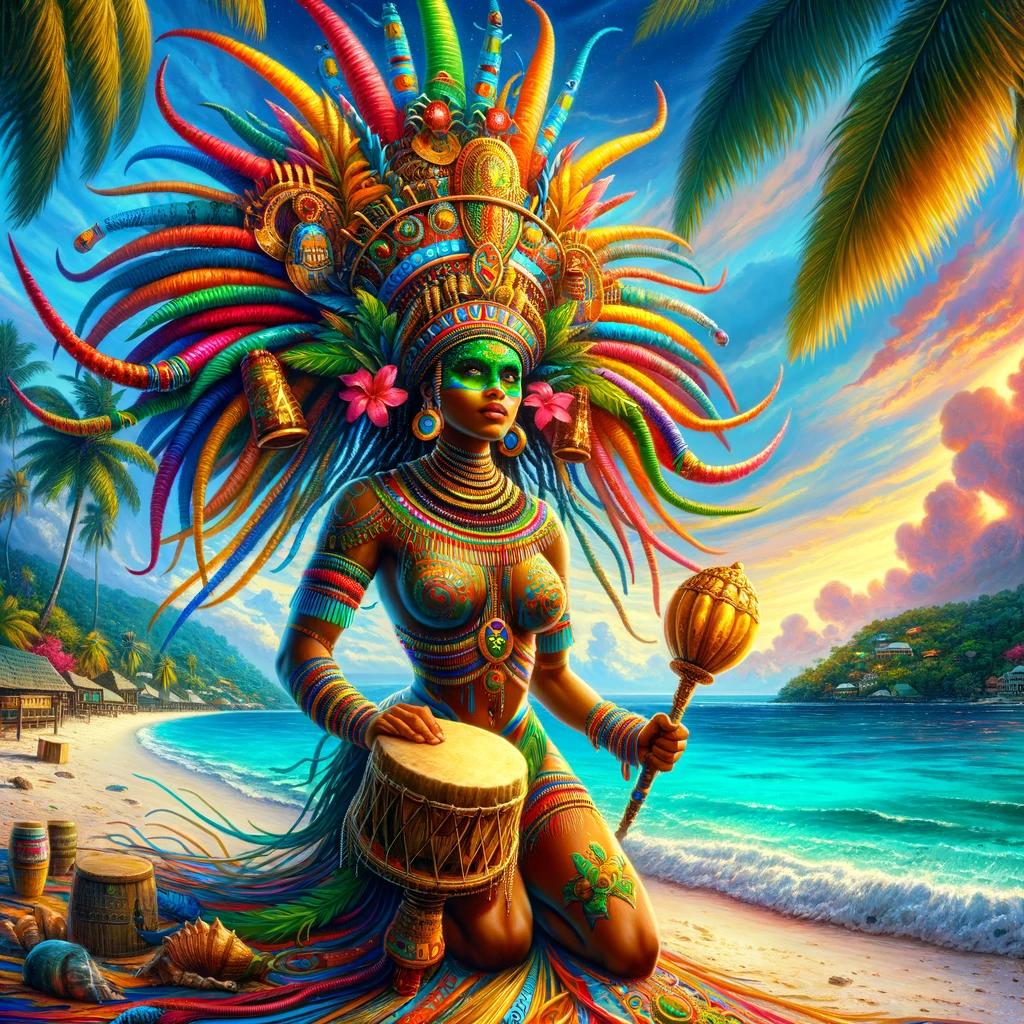
Ezili Dantor represents strength and resistance against oppression.
Ogou Feray: The Warrior Spirit
Ogou Feray is the spirit of warriors, known for his courage, loyalty, and protection. He is associated with metalworking and is depicted as a strong and fierce warrior wielding a machete.
Ogou Feray embodies the virtues of honor and valor.
Cuban Mythology: A Fusion of African and Catholic Beliefs
In Cuban mythology, the rich cultural heritage of African traditions merges with the influence of Catholic beliefs, resulting in a fascinating fusion of spiritual practices. The syncretic religion known as Santeria plays a significant role in Cuban mythology, blending elements from the Yoruba pantheon with Catholic saints.
The Santeria Pantheon: Orishas and Deities
At the heart of Cuban mythology is the Santeria pantheon, comprised of Orishas and deities. These divine beings serve as intermediaries between humans and the supreme deity, referred to as Olodumare or Olorun.
Each Orisha possesses distinct qualities and governs various aspects of life, providing guidance and protection to their followers.
Ochun: The Goddess of Love and Fertility
Ochun, often associated with the Catholic figure of Our Lady of Charity, is revered as the goddess of love, beauty, and fertility. She embodies sensuality and is believed to bring joy, prosperity, and harmony to her devotees.
Ochun is associated with rivers and her worship involves offerings of honey, fruits, and flowers.
Chango: The God of Thunder and Fire
Chango, syncretized with Saint Barbara, is a powerful and fiery deity associated with thunder, lightning, and fire. He is regarded as a warrior and protector, embodying strength, courage, and passion. Followers of Chango seek his assistance in matters of justice, love, and success.
Yemaya: The Mother Goddess of the Sea
Yemaya, likened to the Virgin Mary, is revered as the goddess of the ocean and motherhood. She is associated with nurturing, fertility, and emotional healing. Devotees turn to Yemaya for guidance in matters of family, fertility, and emotional well-being.
Offerings to Yemaya often include shells, blue and white flowers, and seafood.
The blending of African and Catholic elements in Cuban mythology creates a unique and vibrant spiritual landscape. The syncretism found in Santeria not only reflects the resilience and adaptability of enslaved Africans, but also highlights the cultural diversity and religious creativity of the Cuban people.
Dominican Republic: Legends and Deities in Caribbean Folklore
The Dominican Republic, a country rich in culture and folklore, has its own unique myths and legends within Caribbean mythology. These stories reflect the blend of influences from African traditions and Spanish colonialism.
Let’s dive into some fascinating legends and deities from Dominican Republic’s folklore.
La Madama: The Queen of Spirits
La Madama, known as the Queen of Spirits, is a prominent figure in Dominican folklore. She is believed to be a powerful spirit that can communicate with the spiritual realm and provide guidance.
La Madama is often depicted as a elegant woman dressed in all black, wearing a hat and smoking a cigar. She represents wisdom, knowledge, and spiritual connection.
Ciguapa: The Mysterious Female Creature
The Ciguapa is a legendary creature from Dominican folklore, typically described as a beautiful woman with long hair and backwards feet.
They are believed to inhabit remote areas, such as mountains and forests. Ciguapas are known for their mesmerizing beauty and their ability to lure men into the wilderness. They are both feared and admired in Dominican culture.
Anacaona: The Warrior Queen
Anacaona was an indigenous Taíno queen from the Dominican Republic who played a significant role in resisting Spanish colonization. She was known for her bravery, leadership, and her efforts to unite various indigenous tribes against the Spanish.
Anacaona is revered as a symbol of strength and resilience in Dominican folklore.
This is just a glimpse into the captivating legends and deities found in Dominican Republic’s folklore. It showcases the rich cultural heritage of the country and its unique contribution to Caribbean mythology.
Jamaican Mythology: An Afro-Caribbean Blend
Jamaican mythology is a fascinating blend of diverse cultural influences, combining elements from Africa, Europe, and the indigenous Taíno people. This rich tapestry of beliefs and legends has given rise to a captivating folklore that reflects the island’s history and heritage.
Anansi: The Trickster Spider
One of the most well-known figures in Jamaican mythology is Anansi, the trickster spider. Anansi is a cunning and clever character who uses his wit to outsmart others and navigate through difficult situations.
He is often depicted as a storyteller, spreading wisdom and entertainment through his clever tales.
Queen Nanny: The Resilient Maroon Leader
Queen Nanny, also known as Granny Nanny, is a legendary figure in Jamaican folklore and history. She was a prominent leader of the Maroons, a group of escaped slaves who fought against their oppressors and established communities in the rugged mountains of Jamaica.
Queen Nanny is revered for her tactical skills, spiritual guidance, and unwavering determination.
River Mumma: The Water Spirit
River Mumma, also known as River Mama, is a water spirit that holds a significant place in Jamaican mythology. She is believed to reside in deep rivers and streams, embodying the power and mystery of the water.
River Mumma is often depicted as an enchanting and seductive figure, associated with fertility, protection, and the unpredictable forces of nature.
Jamaican mythology is a testament to the resilience, creativity, and cultural diversity of the island’s people.
Through its vivid characters and compelling stories, it provides a window into the soul of Jamaica and the complexities of its history and traditions.
Puerto Rican Mythology: The Legends of the Taínos
Explore the captivating mythology of the Taíno people, the indigenous inhabitants of Puerto Rico.
Their rich folklore is filled with powerful deities and legends that offer insight into their ancient beliefs and customs.
Yucahu: The Supreme Taíno Deity
Yucahu is revered as the supreme deity in Taíno mythology. He is associated with creation, rain, and fertility, and is believed to have brought forth the first humans. Taínos would offer rituals and prayers to Yucahu, seeking his blessings for bountiful harvests and protection from natural disasters.
Atabey: The Taíno Goddess of Fertility
Atabey holds a prominent place in Taíno mythology as the goddess of fertility and the earth. She is depicted as the caring mother and provider, embodies the nurturing qualities of nature, and is closely associated with the growth of crops.
Taíno women often sought Atabey’s guidance and blessings for safe pregnancies and abundant food sources.
Coaybay: The Taíno God of Rain
In Taíno mythology, Coaybay is the god of rain and the protector of water sources. He is believed to control the weather and is invoked during droughts or excessive rainfall. Taínos would perform rituals and ceremonies to show respect and seek Coaybay’s assistance in ensuring a balanced and fruitful climate for their agricultural activities.
Caribbean Mythology in Popular Culture
The rich mythological traditions of the Caribbean have captivated the popular culture worldwide, inspiring various forms of artistic expression. From literature to films, music, and visual arts, Caribbean mythology has left a significant impact on creative industries.
One notable manifestation of Caribbean mythology in popular culture is evident in literature. Renowned authors like Alejo Carpentier, Edwidge Danticat, and Junot Díaz have incorporated elements of Caribbean mythology into their works, giving readers a glimpse into the mystical and fascinating world of gods and goddesses.
These literary works not only entertain but also educate readers about the diverse mythologies of the Caribbean.
The influence of Caribbean mythology extends to the film industry as well. Movies like “The Serpent and the Rainbow” and “Pirates of the Caribbean” franchise have drawn inspiration from Caribbean mythological figures and themes.
These films showcase the larger-than-life adventures of gods, goddesses, and mythical creatures, captivating audiences with their fantastical narratives.
In the realm of music, Caribbean mythology has influenced various genres, such as reggae, calypso, and salsa.
The lyrics often reference gods and goddesses, incorporating their stories and symbolism. Musicians like Bob Marley, Celia Cruz, and Harry Belafonte have celebrated Caribbean mythology in their songs, preserving and sharing the cultural heritage with a wider audience.
Visual artists have also embraced Caribbean mythology as a source of inspiration. Paintings, sculptures, and mixed-media artworks often depict iconic deities and mythical creatures, bringing them to life in vivid and vibrant ways.
These artistic representations serve as visual narratives that honor and celebrate the rich mythological traditions of the Caribbean.
Caribbean mythology continues to thrive in popular culture, captivating the imagination of people around the world.
Its influence can be found in various forms of creative expression, reminding us of the enduring power and relevance of these ancient tales.
Exploring Other Caribbean Pantheons and Deities
The Caribbean region is home to diverse mythological traditions beyond those explored in the previous sections. This section delves into the influence of the Yoruba religion on Caribbean mythology, the presence of indigenous Caribbean deities and spirits, and the phenomenon of syncretism in the blending of belief systems.
The Yoruba Influence in Caribbean Mythology
The Yoruba religion, originating from present-day Nigeria, has greatly influenced Caribbean mythology. Enslaved Africans brought their Yoruba beliefs to the Caribbean, resulting in the assimilation of Yoruba deities into local mythologies.
Notable Yoruba orisha, such as Ogun, Oshun, and Shango, are revered in various Caribbean cultures, each representing different aspects of life and nature.
Indigenous Caribbean Deities and Spirits
Before the arrival of European colonizers, the Caribbean was inhabited by indigenous peoples with their own rich mythological traditions. These native cultures worshipped a range of deities and spirits tied to the land, sea, and sky.
Examples include the Taíno’s worship of Yucahu, the supreme Taíno deity, and the reverence for River Mumma, a water spirit prominent in Jamaican folklore. These indigenous deities continue to play a significant role in Caribbean mythology today.
Syncretism and the Blending of Belief Systems
Syncretism, the merging of different religious beliefs and practices, is a prominent feature of Caribbean mythology. Over time, African, indigenous, and European belief systems have intertwined, creating unique syncretic traditions.
Examples include Santeria, which combines Yoruba deities with Catholic saints, and Vodou, which fuses African and Catholic elements. These syncretic belief systems showcase the resilience and adaptability of Caribbean mythologies in the face of colonization and enslavement.
.











